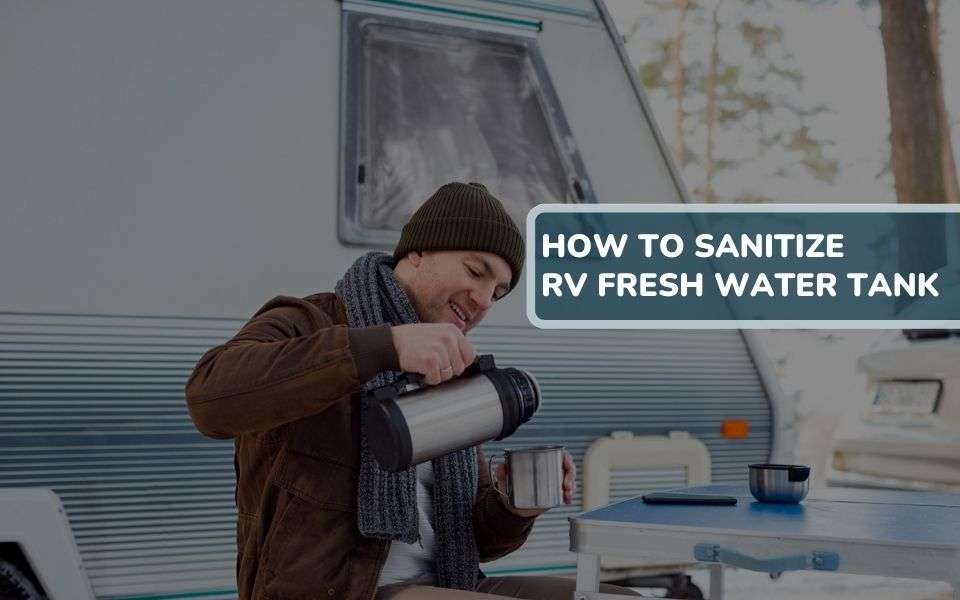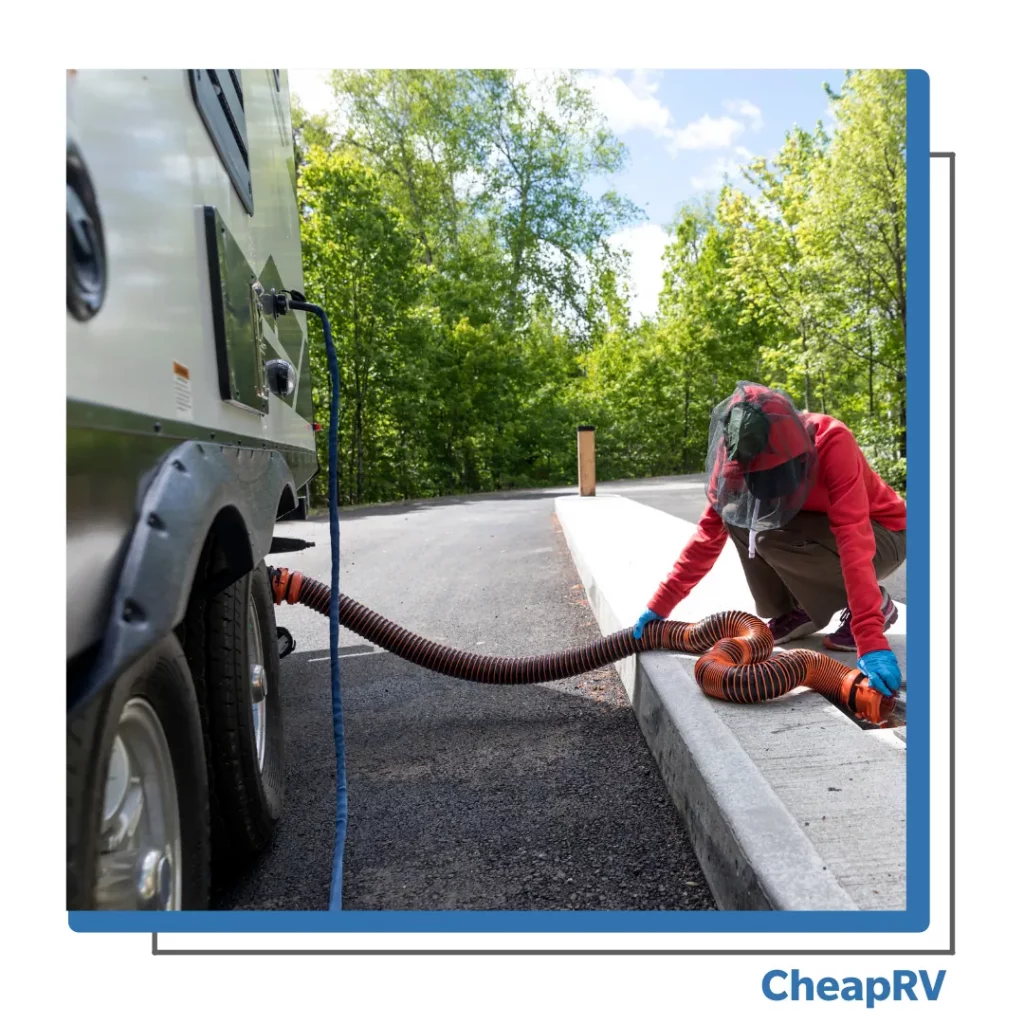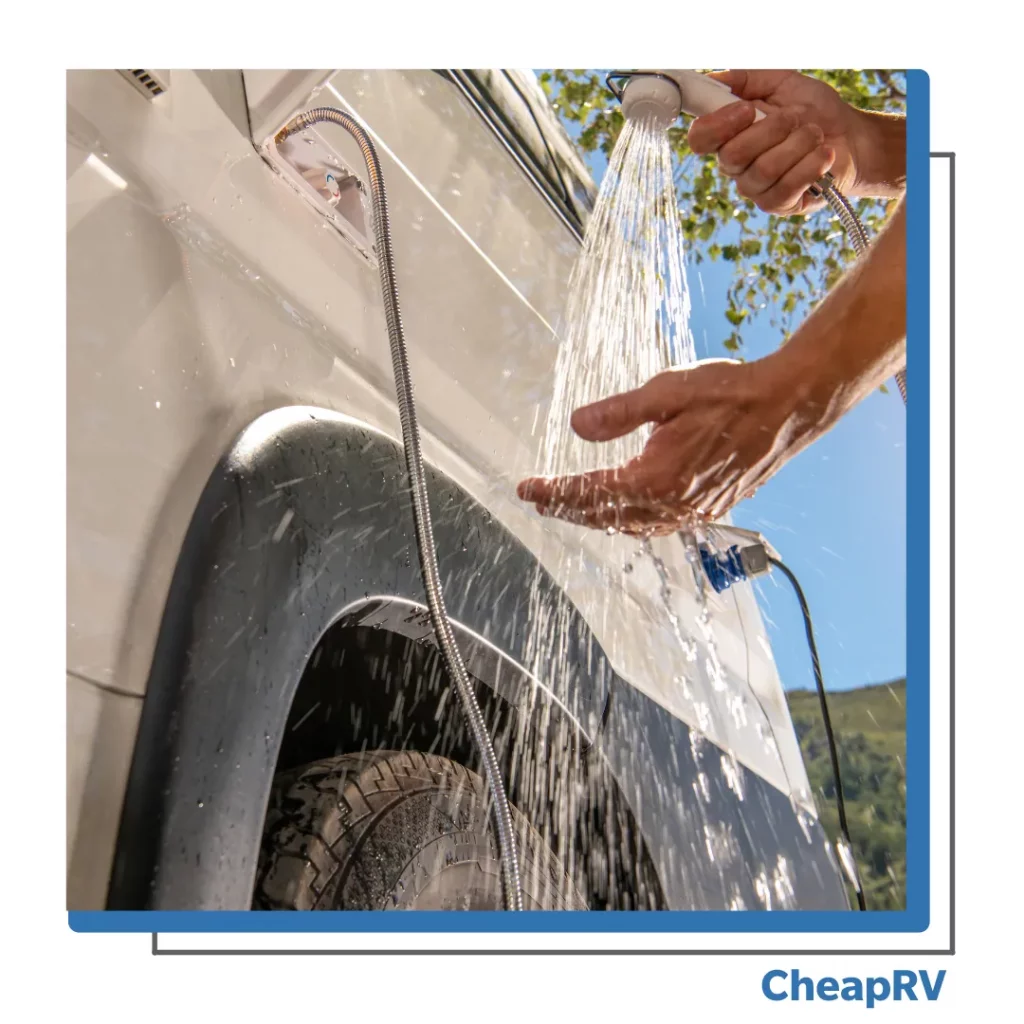
How To Sanitize RV Fresh Water Tank Within 6 Easy Steps
If you are an RV owner, then it goes without saying that you know how important it is to ensure that your RV’s fresh water tank is in tip-top shape at all times.
The reason why your fresh water tank is so important is that this tank stores the primary source of drinking water for you and your family.
And if left untreated for too long, a buildup of bacteria and molds could cause serious harm to your and your loved ones’ health.
Cleaning your freshwater tank every six months is crucial because if the onboard freshwater system is unsafe to drink, there might be bacteria in it that could cause various health problems.
Of course, you would not want such a thing to happen, especially during your vacation, so you should sanitize your tank regularly.
Supplies Required to Sanitize Your RV’s Fresh Water Tank
Before and after you fill your fresh water tank, it’s important to sanitize the inside of your tank. Failure to sanitize your tank before filling can severely affect your health and cause damage to the tanks themselves.
So, let’s look at the tools and supplies you need to properly clean the fresh water tank in your RV:
- 1-gallon pitcher
- Safe hose for drinking water
- Clorox disinfecting bleach
- Water transfer pump (Self Priming)
- Deodorizer and system cleaner for freshwater
- Measuring cup
- Funnel
How to Sanitize the Fresh Water Tank Of an RV
If you’re using your RV to camp or travel, you’ll want to ensure you properly disinfect your fresh water tank. It is a simple process that can be done with just six steps.
Turn Off the Hot Water Heater
First, turn off your RV’s Hot Water Heater and prepare it for the sanitization process. You can do this by either turning off the power to the water heater or opening a valve letting water drain out of your water tank.
If you have an electric water heater, turn off the breaker that powers it. If you have a gas-powered water heater, open a valve at the bottom of your RV’s water tank; this will allow any remaining water in the tank to drain.
Empty Your RV’s Fresh Water Tank
After you’ve removed the cap from your fresh water tank, it’s time to empty it. If you’re not sure how, here are a few tips:
First, ensure that any valves are closed, and then turn off the pump that supplies water to your fresh water tank. That will prevent you from wasting water if you don’t know how to drain it properly.
Next, turn on the faucet of your tank so that any remaining water drains out into a bucket below.
Once all the water has been drained out of your RV’s fresh water tank, disconnect the hose from underneath and put everything away. You can also use a water pump to ensure it is completely drained.
Prepare the Water and Bleach Combination
The third step in sanitizing your RV fresh water tank is to prepare the water and bleach combination. Next, calculate the amount of bleach necessary to clean your tank. Excess bleach can damage your pipes, and too little will not properly sanitize the tank.
To prevent damage, the recommended ratio for sanitizing RV fresh water tanks is 1 ounce of bleach to 8 gallons of fresh water. You’ll need a large bucket or sink to mix it in. Thus, if you have a 60-gallon tank, you’ll need 7.5 ounces of bleach to properly sanitize it.
Take the proper ounces of bleach into the bucket or sink. Then add the 1 gallon of water, mixing them until they’re thoroughly combined.
Fill the RV’s Fresh Water Tank
Once you have your bleach and water mixture, you’re ready to fill your RV’s fresh water tank. The tank should be in the back of your RV, so grab a bucket and start filling it up.
Ensure that the bleach and water mixture reaches everywhere in the tank by pouring it slowly over all sides. If nooks or crannies have not been covered, pour more bleach and water into them until they are full.
Allow The Bleach Water to Sit for Some Time
Once you have added your bleach water mixture to your fresh water tank, allow it to sit for at least 15 minutes. The longer you let the mixture sit in your tank, the more time it has to kill all germs, odors, and bacteria in your system.
In some cases, you leave the bleach water mixture to sit in your tank overnight. That is especially true if your freshwater system has extreme contamination or if you are trying to remove visible algae from the bottom of the tank.
But if your water system has extreme contamination, you may require the bleach water mixture to sit for up to 4 hours or, in extreme cases, 12 hours.
That is because bleach works by oxidizing organic matter and breaking down the bonds between them—and if those bonds are strong enough (or there are many), it can take some time.
If you are unsure how long to leave the bleach water mixture in your fresh water tank, just add it and wait until all of it has been consumed before using it again.
Empty Your RV’s Fresh Water Tanks and Flush It
After the bleach water mixture has sat in your tank for enough period of time, it’s time to flush the tank. Doing this will ensure that all chemicals have been rinsed out of the system. If you don’t do this step, some of the chemicals could still be left behind and cause damage to your plumbing.
To empty your freshwater tanks, open each one and drain it into a bucket or container outside. Then run water through them until they are empty.
Once they’re empty, close them up again and let them sit for another 24 hours before refilling them with clean water. You may have to repeat this process multiple times to get that chlorine smell out of your RV’s fresh water tank.
How Often Should You Sanitize Your RV’s Fresh Water Tank
When you’re on the road, one of the most important things you can do to keep yourself and your family safe is to ensure your fresh water tank is sanitized. It’s easy, won’t take much time, and can save your life.
It’s easy to forget the importance of cleaning your RV’s water system, but this is an important step in maintaining the overall health of your vehicle.
The condition of your water tank can greatly impact how well your engine runs and the quality of life for everyone inside the vehicle.
So let’s talk about how often you should sanitize your RV’s fresh water tank. Of course, the answer depends on a lot of factors. But if you find yourself in the following situations, you should sanitize your tank.
- When purchasing a new or used RV, you must clean and sanitize its tanks.
- It is recommended that full-time RVers sanitize their RV at least twice a year, every six months.
- If you are taking out your RV after a long time of storage or during wintertime
- When you fill your RV’s tank at a campground and notice that the water is dirty or not healthy to drink
- When your waterline gets contaminated due to dirt in the drinking water
- If you notice slime or algae in your RV water tank.
- When you have not used your rV for two weeks or more, and the water in your RV tank remains used.
How long Can the Fresh Water Stay in The RV Tank?
Fresh water in an RV can last up to two weeks. The length of time depends on how often you use it and its temperature.
If you do not use the water for more than 14 days, it is better to drain it from your tank to avoid any bacteria growth or other infections that may occur due to stagnation.
If the water in your RV stays longer than two weeks, mold, mildew, bacterial, and fungal spores can find their way into the tank and contaminate the water. These microbes are capable of causing illness in humans when ingested.
To ensure that your drinking water is safe for consumption, you must regularly change your RV’s holding tanks. If you can’t do this frequently, you can use your mobile device to set some type of alarm or reminder to help you remember to do a bi-weekly cleaning.
The Easiest Way to Keep in Your RV Fresh Water Tank Clean
The easiest way to clean your RV’s fresh water tank is by creating a preventive measure checklist. Then, every time you get ready to use the RV, check off each item on the list and make sure it’s done correctly.
This way, you’ll be able to maintain a proper sanitization schedule for your RV’s fresh water tank throughout the year!
Seasonal RVers can sanitize their fresh water tank every four months, and full-time RVers should sanitize more frequently—especially if there are pets in the RV or if someone has been sick recently (or if there’s been any sort of contamination).
Conclusion
To prevent damaging your RV’s water system, you must clean the tank before turning into an RV park or rest area. There are quite a few steps to follow to ensure that your RV’s fresh water tank is as sanitary as possible.
And while the process of sanitizing the water in your freshwater tank may seem like a lot of work, it’s (quite literally) a necessity if you want to maintain the health and safety of yourself and your family while on the road.
In short, it’s a good idea to give it some thought before hitting the road. So consider these six steps, and be sure to do them diligently.










